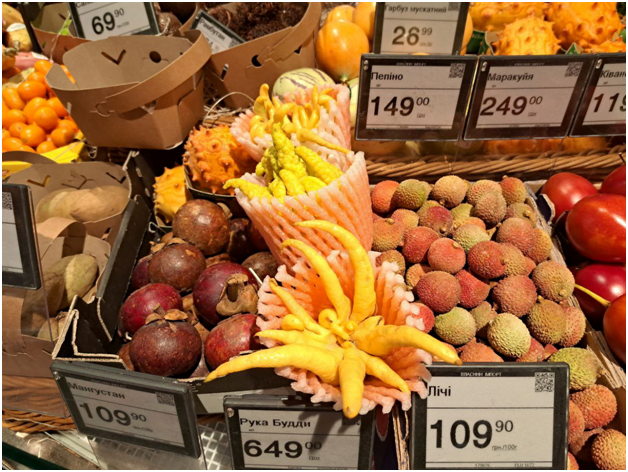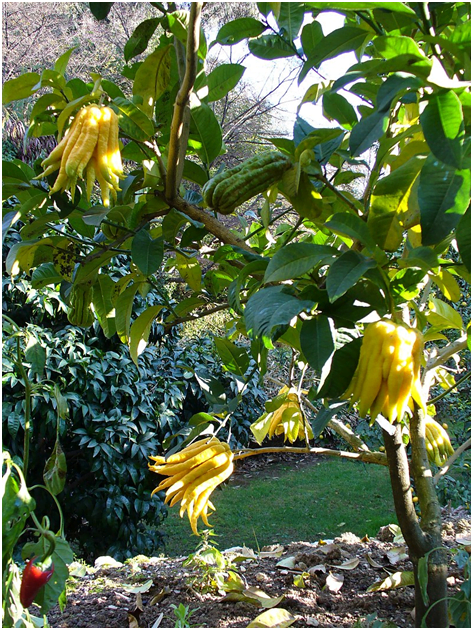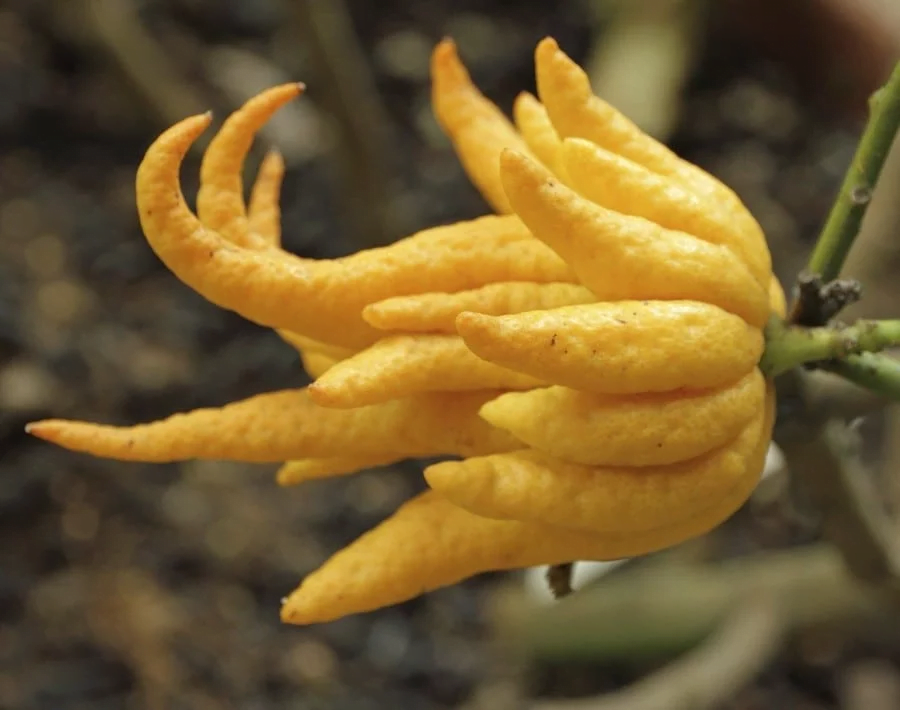Fingered citron, also called “Buddha’s Hand,” is a healthy and tasty exotic fruit that is rapidly gaining popularity. However, it is obvious that its popularity is largely due to its unusual appearance rather than taste.
In Ukraine, this fruit can now be bought in premium supermarkets in the exotic fruit department, EastFruit specialists report. It is not surprising, because it is rather expensive. For one such fruit you will have to pay 649 UAH, which corresponds to $18.1 US dollars. See our recent photo below.

As you can see, other exotic fruits placed next to this one are much cheaper than Buddha’s Hand. Next to this fruit, pepino, passion fruit, kiwano are also offered per piece, while: lychee and mangosteen are sold by weight. There is no doubt that it is the finger citron that “catches” the consumer’s eye and draws attention to the exotic shelf, since it looks the most exotic of them all. Sounds like the Buddha’s Hand fully deserves its place in the next edition of East-Fruit’s ranking of the Top-10 strangest exotic fruits in the world.
Few people know, but fingered citron or “Buddha’s Hand” can vary widely in size, shape and appearance depending on growing conditions and the specific variety of this fruit. Yes, there are many varieties of it, which have their differences as it has been cultivated by people for many years. The fruits are small at first, oval or oblong in shape and purple-brown in color. As they mature, fingered citrons become golden yellow and the non-stem end of the fruit separates and expands into elongated finger-like segments. The fingers can be spread wide in all directions, or they can be tightly folded and closed.
The peel of the citron is covered with small oily glands that emit an aromatic scent reminiscent of lemon and lavender. The peel also has a bittersweet, citrusy flavor. Under the skin, the pulp is usually devoid of juice and contains only a thick and spongy white pith that tastes sweet. Overall, the taste of Buddha’s Hand Citron can be described as brightly floral, slightly citrusy, and sweet with a hint of bitterness. This fruit is used mainly as a seasoning to enhance the taste of dishes.
Read also: Global ranking of dried fruit exports – which countries perform best?
Buddha’s Hand Citron, botanically classified as Citrus medica var. Sarcodactylis is native to Asia, where it has been known and cultivated for thousands of years. This plant belongs to the Rutaceae family.

This citrus tree is grown not only for its fruit, but also as an ornamental plant.
The whole Buddha Hand fruit can be stored for 1 to 2 weeks in a cool, dry place away from direct sunlight. Fruit will keep in the refrigerator for 2 to 4 weeks.
The Buddha Hand Citron in Asia symbolizes longevity, happiness, and good fortune. In China and Japan, the fruit is placed on Buddhist altars as an offering. This symbol of praying hands found its way into the home decor of Chinese dignitaries, and the Buddha’s Hand citron shape was often carved from precious stones such as jade. Buddha Hand Citrons are often given to friends and family for New Year’s and are believed to bring good luck for the coming year. During the celebration, the fruits are used as table decorations, cut, and used as a fragrance in laundry, and the oil from the peel is used as a perfume.
The use of the site materials is free if there is a direct and open for search engines hyperlink to a specific publication of the East-Fruit.com website.




